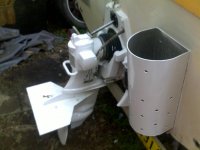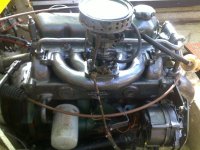how do I tell the 100 from the 100b rick, my boat is a 1975 model
First off.... I believe that by 1975, the 100 drive would have no longer been available.
Are you certain that this is a 100 drive and not a 200 or 250 drive?
The Aquamatic 100 uses that weird univeral shaft system, whereas the Aquamatic 100B uses a more conventional universal shaft using a standard bearing cross (aka u-joint, as the younger guys refer to).
Are you able to post a few pictures of this drive. If I can see photos, I can just about tell you which drive you have.
Meanwhile.... here's a 100.
Note the universal drive shaft.
Here's the 100B.
Note the more conventional drive shaft using bearing crosses.
Here's a 200 drive.
Here's a 250 drive.
I have to be honest here....... if you do have a 100, and if this 100 requires much to ready it for the water, you'd be better off cutting your losses now, and find a 250 or later system.
Sometimes we can pick up a small trailered donor boat with a bad 4 cylinder engine or rotten cores, etc, for next to nothing.
When these are trailered sized boats, seldom are the drives bad or corroded, and require not much more than bellows, water neck fitting, bearing crosses, etc.
.





